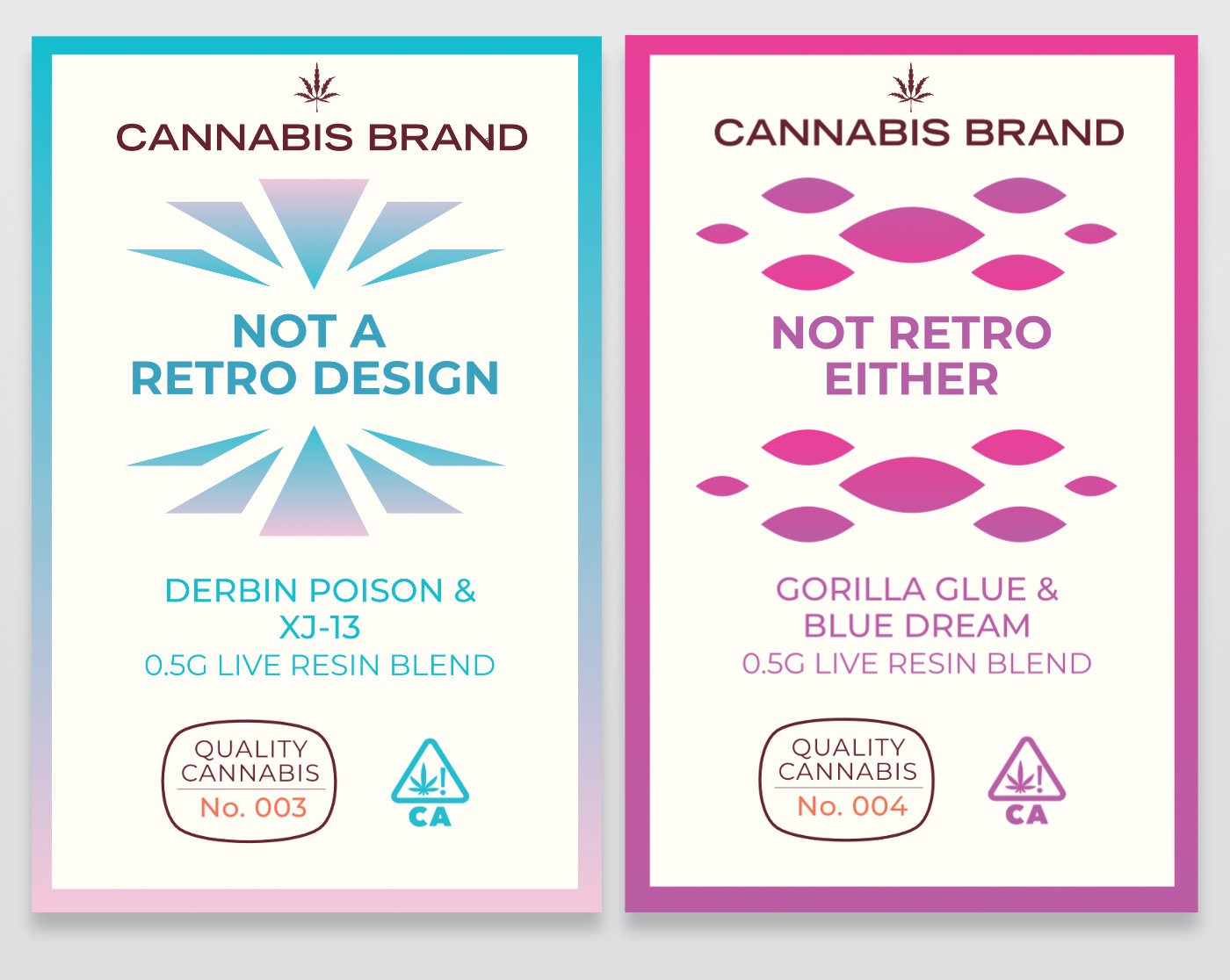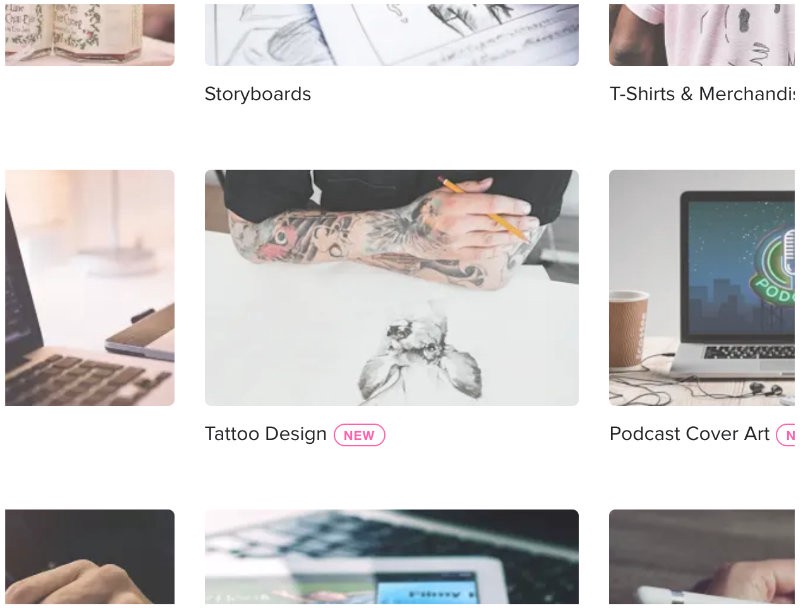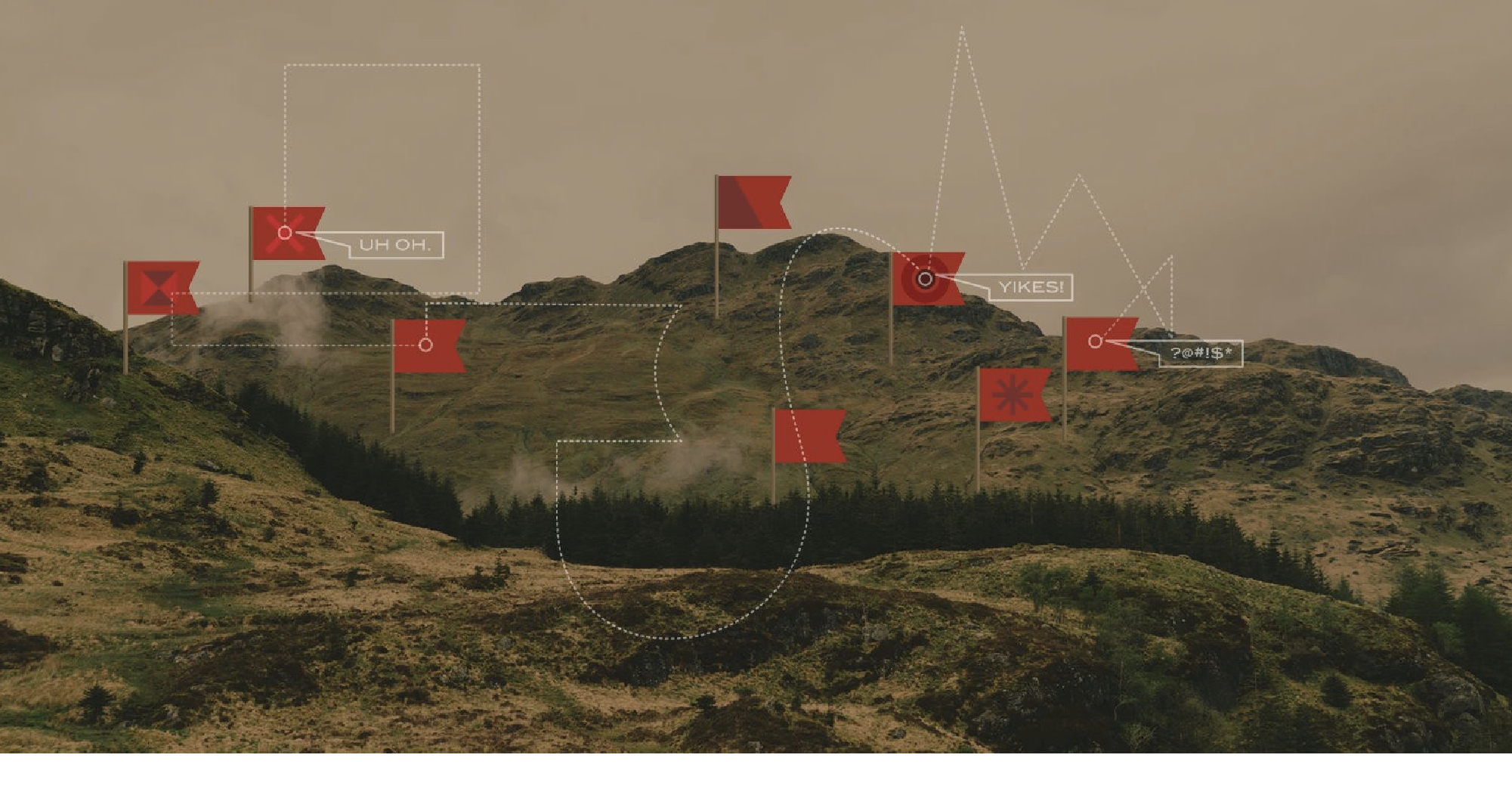A few weeks ago I turned down a six-figure salary after a few of my conversations with the founder exposed some red flags that became harder and harder for me to ignore the more we talked. Everything from the outset seemed to be working in my favor – it was a cannabis project (fun & cool), the team was really small (great to make my mark), and they had the ability to compensate me accordingly (woo hoo, money!). As the discussions went forward however, little things would surface that gave me pause and turn up my anxiety dial. Over the course of my career I’ve been around a lot of different types of early-stage founders, and I tend to pick up on certain nuances that give me the feeling that the project will not go well for me.
The concept of a red flag usually surfaces around the subject of dating as a strong indication that there is an insoluble problem with your potential mate. Turns out, matching up with a client is strikingly similar to dating in a lot of ways, but the red flags that crop up in these situations seem harder to target and eliminate. We seem less inclined to cut off a project because of a potential paycheck or insulting a new person in our network, but ignoring the red flags can lead designers down a bumpy path, putting the success of our project into question.
At this stage in my life, ownership is one of the most important factors determining whether or not I take a job. If I’m not leading the design vision and setting the tone for the company, it does little to utilize my past experience and I’m stuck while growth in my career stagnates. So while my intuition isn’t always 100% spot-on, I’ve come to recognize a few of the following indicators before signing a contract that will only lead to frustration.
Married to Ideas
A client or executive who’s married to their ideas tend to be the most difficult breed to suss out because most people tend to want to be agreeable and collaborative, especially in your first few interactions with them. In the beginning they’re selling you on their idea and they have to entice you as a designer to their grand concept and get you fully on board. This is why I try to present an original idea as soon as I can into the initial stages of a project. Usually I find that if a majority of my ideas are considered with skepticism or flat-out rejected in the first few rounds of feedback, the client is most likely married to their own ideas.
In the initial talks with the cannabis company, the founder produced a handful of creative examples that were developed by an agency, walking me through his overall vision of the company. As we looked over the work, he noted, “this logo fine, I don’t think we need to change it” or pointing out “I really like element x” and then repeating it a few more times. This insistence felt like he was already committing to the ideas they had presented to him, possibly because he had already paid for the work and felt he needed to get his money’s worth. But something about the layouts felt slightly uninspired to him, so I offered to develop a few ideas of my own to show him.
I took a stab at reworking the design of some labels for pre-rolls he had developed, and I came up with three ideas– one variation of his original concept, one in my own style, and a a third that took an entirely different approach. I gave him well-presented mockups and attached them in an email with descriptions of my thoughts behind each direction. I also gave feedback on the logo as well as some concepts on a marketing piece. Almost everything I presented was rejected outright, with the logo update tentatively open to revision, but those same revision ideas tossed out in a later phone call. Sitting 0-for-5 on feedback and us circling back on the original agency concepts, this project was starting to feel like it wasn’t going to bode well for me.

This is what qualifies as ‘retro’ these days?
Discounting Your Portfolio
As a designer working as long as I have, most of my work has a distinctive style, but as I’ve evolved over the years so has my portfolio. Different projects have called for different styles so objectively there’s a fair amount of variation in my work. However, as we went over the designs I had reworked for company’s founder, he repeated multiple times that he wasn’t so into my retro look, and that my retro look wasn’t right for his product, could I design something other than retro? I attempted to explain that two of the options were clean and contemporary, but he was unable to see the differences of my portfolio pieces with the new work I had submitted.
After this meeting, I was sort of scratching my head wondering — if this client wasn’t into the style I presented in my portfolio, why would he go out of his way to specifically hire me? Any time I’ve been confronted about how my portfolio looks or questioned about my abilities, the project tends to be a lost cause. Their doubt in my skill set weighs on them like a cloud, and they tend to be assessing whether or not I’ll bend to their vision. This interaction is a rift that’s very difficult to bridge, and initial meetings are one of the best times to figure out ownership and creative vision. I would rather figure out this rift after an intro, rather than committing to a project and end up limping through it with mismatched goals.
An executive worrying out loud and repeatedly making the same points over and over usually clues me into the fact that I may not be the person for the gig, as it shows they haven’t worked out their goals on their own. They’re sorting their concerns of your working relationship real-time, so it’s always best to try and sway them by showing, not telling, with divergent examples of your work or some concrete example of your skill set. These conversations are where you need to be paying the most attention to what’s being said in-between the lines, so it’s important to set up an in-person meeting as quickly as you can.
Title Obsessed
A common thread that ends up stringing a lot of these previous misgivings together is an obsession with titles. Entrepreneurs with advisory roles, board seats or just a laundry list of CEOs they’re “working with” on their CV can be a vanity play. It can be an indicator of the importance placed on the hierarchy of the people, rather than the importance of the project, so the titles reinforce the power structure — a sort of reminder of who’s calling the shots. I’ve had the Creative Director title bestowed on me with the fanfare of an award, but it becomes meaningless if I’m only creating designs that the founder or CEO directs. In these instances I’ve been relegated to a Creative Editor and less of a Creative Director.
Rarely is the intent malicious, it’s more due to entrepreneurs wanting to be the all-encompassing wellspring of ideas and creation, the one with the vision. And they’ve been working out this grand vision in a vacuum for so long, it’s difficult for them to hand-off a sizable chunk to someone else. In cases like this I usually recommend that they hire a junior designer who’s more interested in experience that can help foster their ideas with less pushback. When a client will first get in touch it’s worthwhile to check their email signature – if it’s filled to the brim with titles, you may need to take a beat to ask some questions on how much design control they might be willing to hand over.

Do you really want a tattoo from a website known for selling their services for $5?
99 Problems but I Ain’t One
Lastly, whenever the conversation veers towards shortcutting any of the process by buying a logo or asset off of any service like Fiverr, Creative Market or 99 Designs, I tend to believe that the client may not fully understand my role. These services are perfectly acceptable for anyone with a limited budget or for those companies who feel like design isn’t integral to their product or service. But at this point they’re having a conversation with someone who can develop unique creative resources for them, undermining my whole reason for potentially hiring me.
I’ve used stock art on a handful of my projects to achieve a specific look I may not be proficient in, but I tend to keep outside assets to a minimum. You stray ever further from the goal of cohesiveness and staying on-brand the more you pull creative from outside sources. By and large I see conversations surrounding these services as a disconnect between the services I offer, how much I cost versus the instinct to save money. In some ways it undermines the trust in my abilities to produce work that’s right for the project. Once you end up quibbling between $50–100 savings on a design asset, you’re already losing the big picture, and that’s not really the type of project I’m interested in working on anyway.
My client was already on a fairly tight timeline (also a potential red flag of its own) and started suggesting we just hire illustrators off of Fiverr to speed up the process. My client noted I already knew how to draw but didn’t want to waste time or money having me create the work. As this discussion surfaced, it really was apparent that I was just going to be a hired hand he needed for my general layout skills and knowledge of design software, but little more. All of these small quirks added up to make it seem I wasn’t going to be on board for any type of creative ownership, so I decided to abandon the project.
I’m sure this endeavor wouldn’t have been too terrible, I genuinely enjoyed all of my interactions with this person, I just felt overall I would end up unsatisfied with the work as my feedback continued to be ignored down the road. As frustrating as it was to turn down a well-paying job, I knew in the end it was the right choice not to take on a project just for the money. An email from the client confirmed he was, in the end, looking to set the creative direction and just wanted an experienced designer help facilitate his ideas. After it was all said and done, I felt validated in what I recognized as red flags and was glad for the pain I had avoided.








